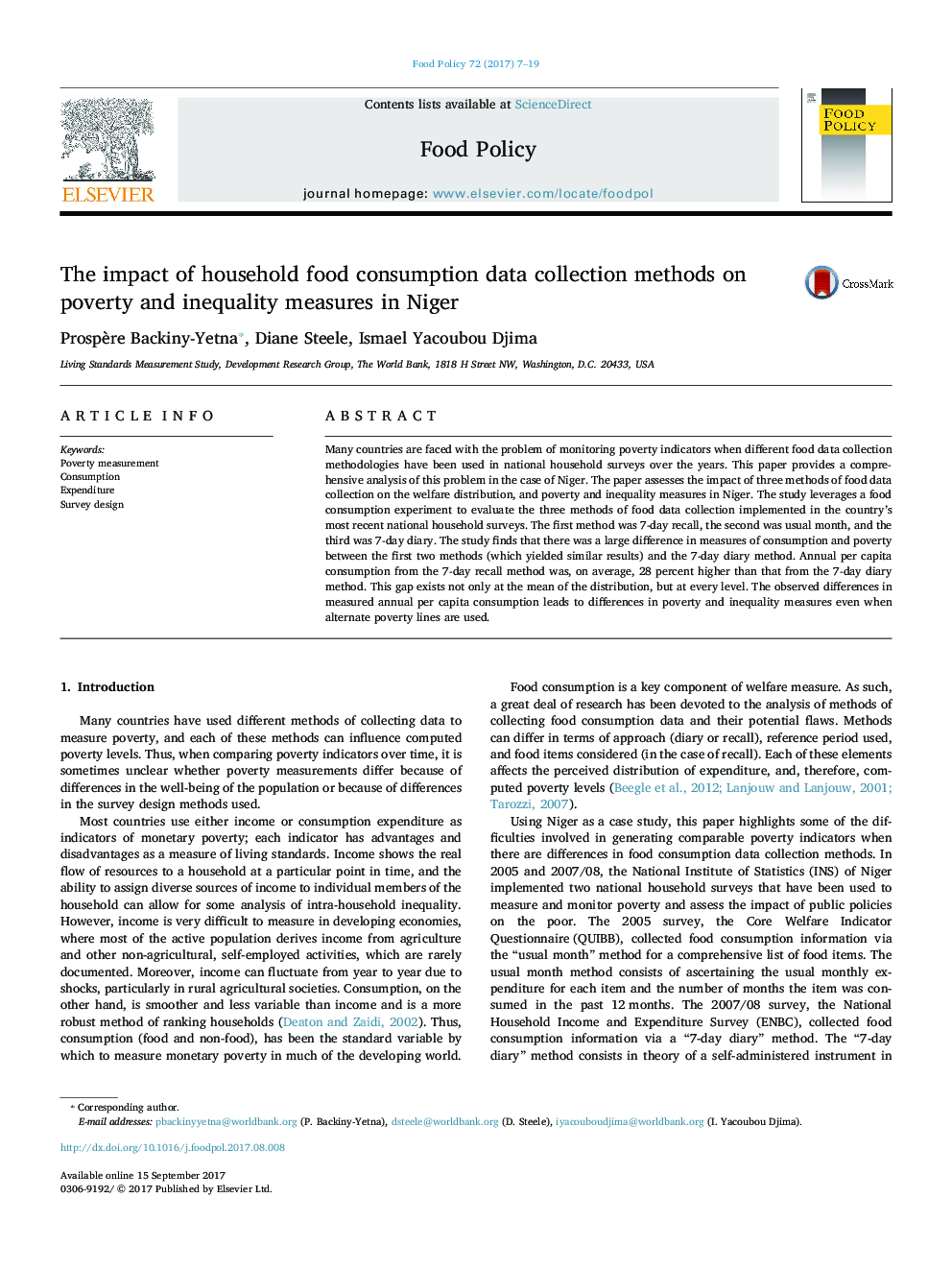| Article ID | Journal | Published Year | Pages | File Type |
|---|---|---|---|---|
| 5070053 | Food Policy | 2017 | 13 Pages |
â¢Households in Niger are randomly assigned one of three food consumption survey designs.â¢Per capita consumption mean from 7-day diary lags behind that of the 7-day recall by 28 percent.â¢Usual month yields per capita consumption levels close to that of the 7-day recall.â¢Differences are observed at the mean and throughout the distribution of per capita consumption.â¢Differences in per capita consumption leads to differences in poverty and inequality measures.
Many countries are faced with the problem of monitoring poverty indicators when different food data collection methodologies have been used in national household surveys over the years. This paper provides a comprehensive analysis of this problem in the case of Niger. The paper assesses the impact of three methods of food data collection on the welfare distribution, and poverty and inequality measures in Niger. The study leverages a food consumption experiment to evaluate the three methods of food data collection implemented in the country's most recent national household surveys. The first method was 7-day recall, the second was usual month, and the third was 7-day diary. The study finds that there was a large difference in measures of consumption and poverty between the first two methods (which yielded similar results) and the 7-day diary method. Annual per capita consumption from the 7-day recall method was, on average, 28 percent higher than that from the 7-day diary method. This gap exists not only at the mean of the distribution, but at every level. The observed differences in measured annual per capita consumption leads to differences in poverty and inequality measures even when alternate poverty lines are used.
